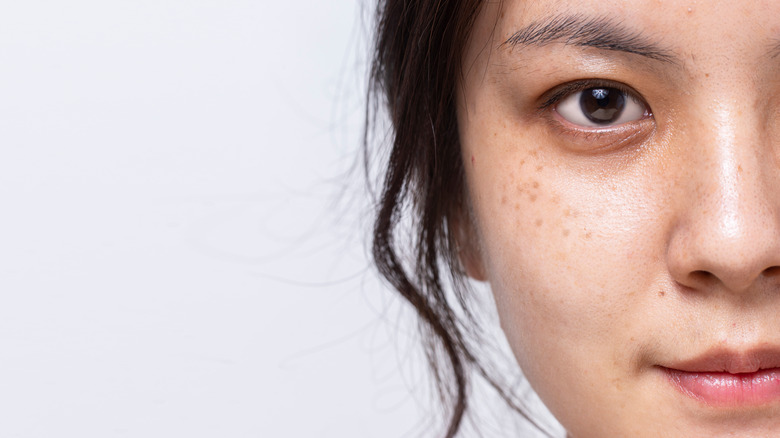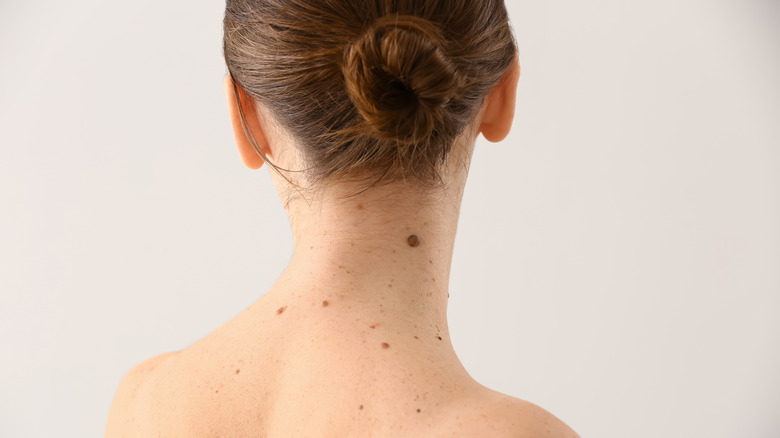Beauty Mark Vs. Mole: What's The Difference?
Freckles are so beautiful that dozens of people are putting fake freckles (using makeup) on their skin (via Ipsy). The same can be said for beauty moles — both of these dark spots make your appearance unique and, to some, more appealing.
But, though they do add flair to your look, a beauty mark and a mole are quite different. Per Skincare, a mole is a pigmented lesion, while a beauty mark (a.k.a. a freckle) is an extra skin cell, darkened by the sun. "Moles tend to be raised (though not always) and increase in size from childhood," Dr. Dhaval Bhanusali, a board-certified dermatologist in New York City, said to the outlet. "Birthmarks can range from pigmented to vascular lesions that you are born with. They are usually caused by an issue with cell migration during initial development."
Furthermore, both marks look different — freckles appear as small dark spots, per The Derm Specs. Moles, on the other hand, can be a variety of colors ranging from brown to even blue. Plus, they can be located anywhere on your body (some might even grow hair out of it).
How safe are beauty marks and moles?
Both moles and beauty marks are relatively harmless, though in rare cases, a mole can become cancerous, per The Derm Specs. The outlet added that a mole will change in size and color, which is an indication that cancer cells are potentially developing. If you're still fretting over potential skincare, there are ways to prevent freckles and cancerous moles, officially called melanoma, Skincare added.
For freckles and beauty marks, as they are developed from melanin, wearing sunscreen is the perfect solution towards preventing these sunspots. Skincare recommended using broad-spectrum SPF 30 or higher every day (and reapply every two hours if you can!). As for preventing melanoma, keep an eye out for all your beauty marks and freckles. Just a slight change can indicate skin cancer is coming, the outlet added.
"Skin cancer can often mimic benign-appearing skin growths," Dr. Peter Schmid, a board-certified plastic surgeon, said to the outlet. "Skin lesions that demonstrate progressive growth, change in color, itch, burn, appear crusted, develop into a red patch, form a sore, bleed, ulcerate, or demonstrate poor healing characteristics should be examined by a professional physician or skin-care expert.

